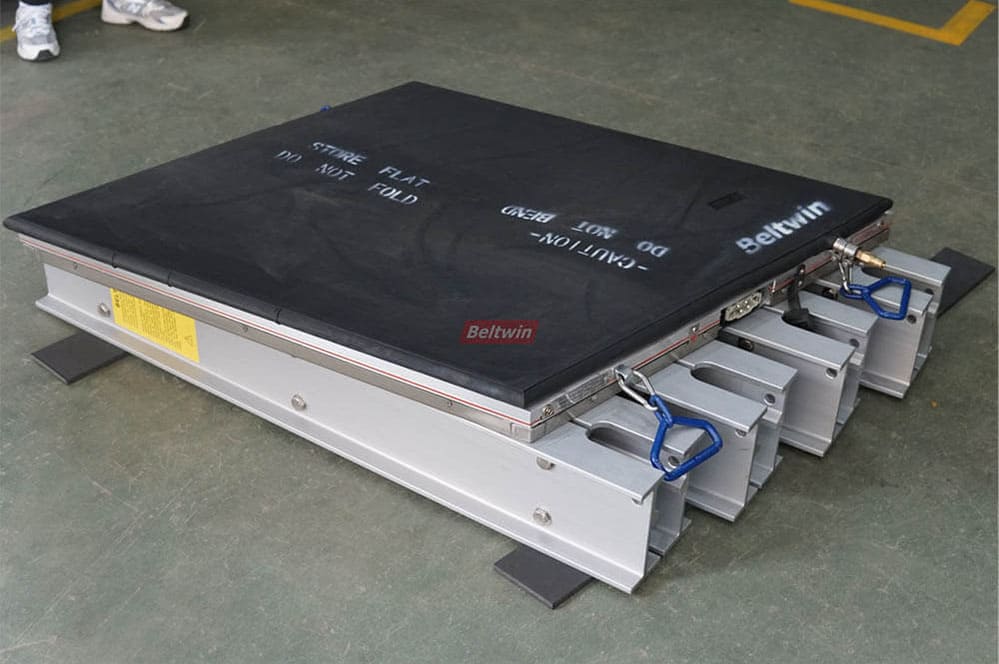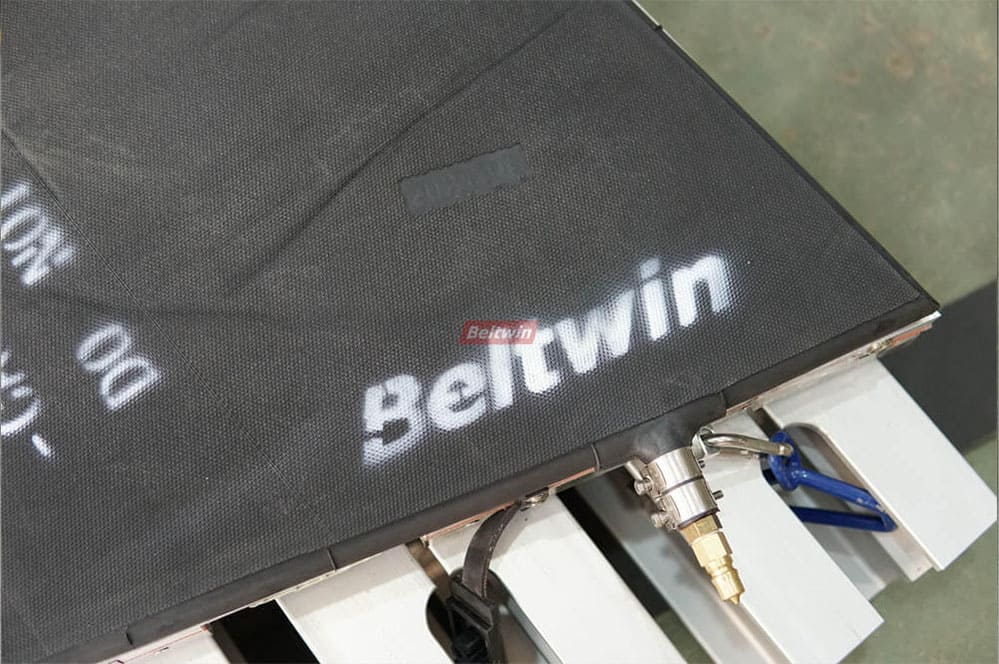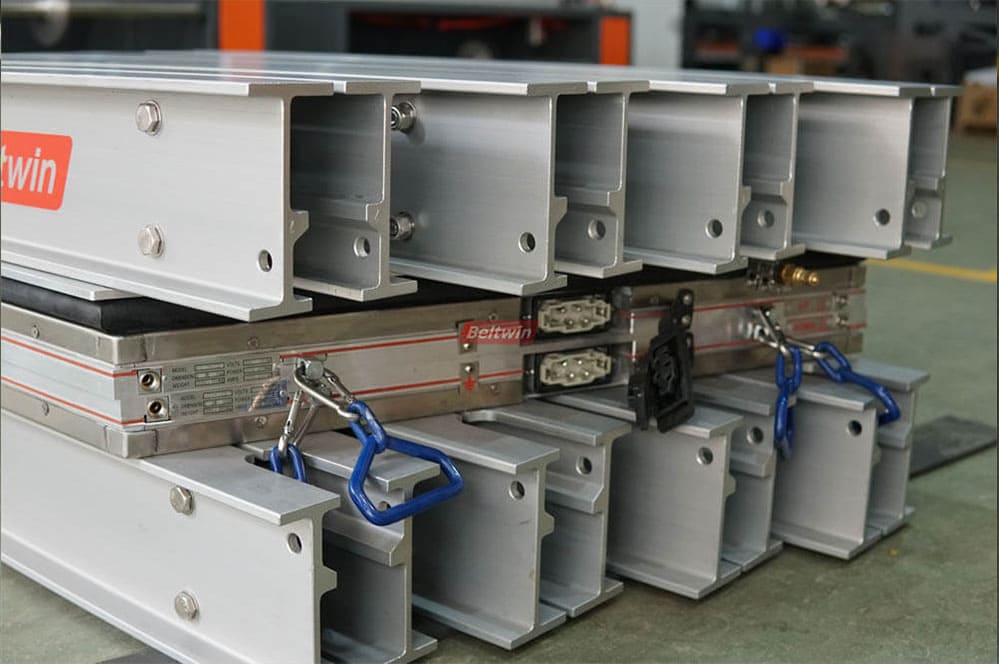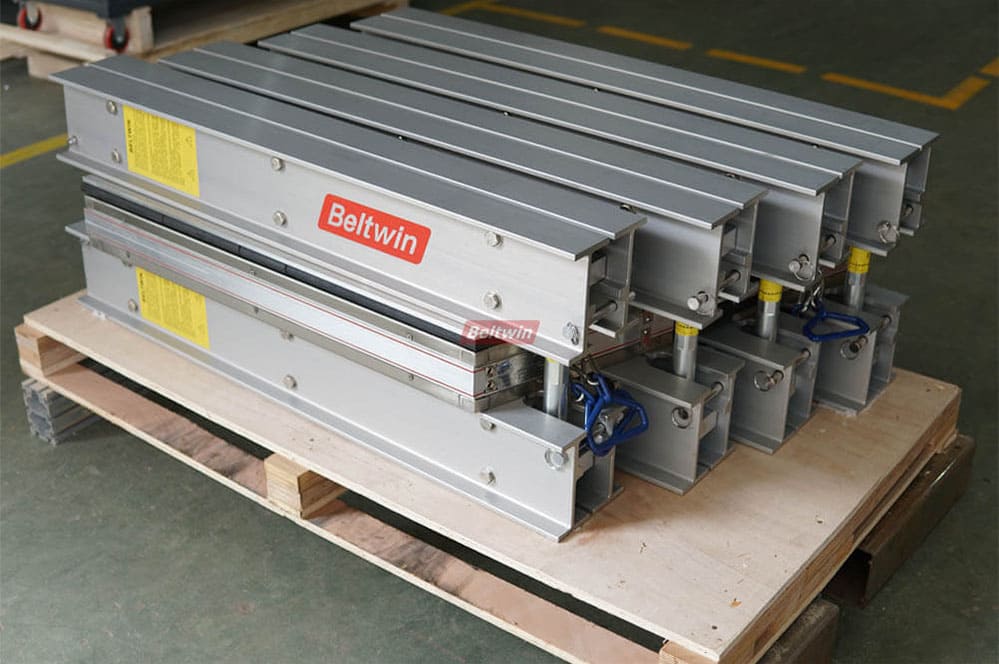What is vulcanization ?
- What is vulcanization
Raw rubber material is a kind of clay-like plastic body with small bond strength and elasticity. However, when it is mixed with sulfur, after heating, it’ll becomes elastic rubber. To put it another words, the sulfur atom acts like a bridge between each rubber molecules, making the rubber molecules combined. This process is called vulcanization.
- Wire rope tape
Wire rope tape joints rely on the adhesion of the wire rope to the glue. This adhesion is expressed by the pulling force, just like the force required for the unit length of the wire rope buried in the rubber. The length of the wire rope buried in the rubber is proportional to the extraction force, and the greater the length buried, the greater the force required. When the buried length increases to a certain value, the extraction force exceeds the breaking strength of the wire rope itself, at this time, the wire rope cannot be withdrawn.
- The Basics of vulcanized rubber
Vulcanized rubber is any type of rubber that’s been hardened through the use of heat and sulfur. It’s made via a curing process in which the rubber’s elastomer harden in response to heat and sulfur. Exposure to heat and sulfur creates new cross-links in the rubber that, ultimately, makes the rubber stronger and more elastic.
The condition of vulcanization, mainly refers to vulcanization temperature, time and pressure, which generally defined as three elements of vulcanization.
(1) Vulcanization temperature
The vulcanization temperature of the tape gluing is one of the most important conditions in this process. It is the best temperature of vulcanization for raw rubber material under certain requirements. Due to on-site operation, bad working environment and poor conditions as well as complicated vulcanization system of the rubber compound, most of the current vulcanization is domestically under the control of 145±5 °C.
(2) Vulcanization pressure
Vulcanization pressure is also an essential condition for tape vulcanization. Because pressure can play the following roles in the process:
A. Improve the compactness and adhesion of the core layer and the rubber material, discharge the gas inside the joint, and eliminate the bubbles:
B. Promote the flow of rubber material and quickly fill the adhesive surface of the core layer;
C. Improve the adhesion strength on the tape joint of adhesive surface and increase the flexion resistance of the tape.
Vulcanization pressure is determined by characteristics of rubber material (mainly plasticity), product structure and process conditions. Less glue flow, more vulcanization pressure, vice versa. Thicker tape requires more pressure. In addition, the effect of vulcanization pressure on the vulcanization rate is so small that can be ignored. Generally speaking, the vulcanization pressure of the steel wire core conveyor belt during on-site vulcanization is 1.5-1.8MPa.
(3) Vulcanization time
The vulcanization time must be appropriate, too long or too short will decrease the effect of the joint, fail to achieve the normal service life.
In terms of vulcanization, vulcanizer plays an essential and fundamental role in the process. Beltwin devotes itself into making the best belt solution for guests. Here are some benefits of vulcanizer in Beltwin.
Firstly, “Pressure bag”. One-piece production and molding, including inner bag, fabric layer, rubber layer and protective layer. The maximum test can reach 250PSI, and the maximum can reach 200PSI in normal use.


Secondly, “Cross Beam”. Regarding the material, the aluminum alloy used for our DSLQ-S BW1200 machine is 7005, and the surface of beam is oxidized, strengthen protection, more textured and good apperance.


For more information, you can check the detailed website below:
DSLQ-S Sectional Vulcanizer:
Machines for Rubber Belt Processing:
https://www.beltwin.com/for-rubber-belts
 Русский
Русский Deutsch
Deutsch Français
Français Español
Español Português
Português